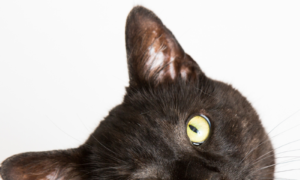 Last night, I attended a presentation/book signing event celebrating the release of the paperback version of Jackson Galaxy’s book, Cat Daddy. There was a VIP reception prior to the “official” event, with ticket sales going to benefit several KC area shelters and rescues.
Last night, I attended a presentation/book signing event celebrating the release of the paperback version of Jackson Galaxy’s book, Cat Daddy. There was a VIP reception prior to the “official” event, with ticket sales going to benefit several KC area shelters and rescues.
Since there were many members of the rescue community attending the VIP reception, Galaxy spent most of his time speaking about his shelter experience and what he’s seen as steps in the right direction toward a No-Kill nation.
Combining his personal shelter work experience with what he’s seen in working with other shelters, he offered suggestions to help boost cat adoption rates. Suggestions included:
- Better descriptions and pictures of the pets on Petfinder. Many people “shop” on Petfinder before going to an adoption event, so the better the picture and more detailed the information is about the cat, the greater the chances are for adoption. So we know, image is everything!
- Better communication between shelter volunteers including keeping a binder of notes on each cat, so potential adopters would be privy to very detailed information about cats they may be considering adopting.
- Shelter volunteers interacting differently with the cats. This relates a bit to the item above, but goes further to stimulate the cat and challenge him to come out of his comfort zone. Galaxy recommended that not every volunteer brush the cat, for example, maybe one volunteer brushes the cat, the next one works to teach the cat a trick. Keeping notes in the pet’s binder, as noted above, will let each volunteer know what’s happened with the cat on a given day.
- Shelter volunteers should observe the cat when the cat enters a room. Does the cat look up and all around the room? If so, he would be considered a “tree dweller” as Galaxy calls them. This is information that would be good to share with adopters so they know what type of toys/cat trees would best suit the cat.
- Challenge each cat to bring them out of their shell. The shy cats that hide aren’t seen by potential adopters are most likely to not be adopted, so as Galaxy said, it’s important to challenge each cat to bring them out of their shell. Cats can be clicker trained to learn a trick, maybe something like a high-five, that will show them to be animated and increase their chances of adoption.
Galaxy stressed to the general audience (about 600 people) that cats are not dogs, the cat’s primary motivation is ownership of territory. He answered audience questions about cat behavior and reinforced how special our feline friends are.
If you haven’t checked out Jackson’s show, “My Cat From Hell” on Animal Planet (Saturdays, 8:00 p.m. EST), I highly recommend it for a way to gain insight into the feline psyche.
His book, Cat Daddy: What the World’s Most Incorrigible Cat Taught Me About Life, Love, and Coming Clean, is available on Amazon.





